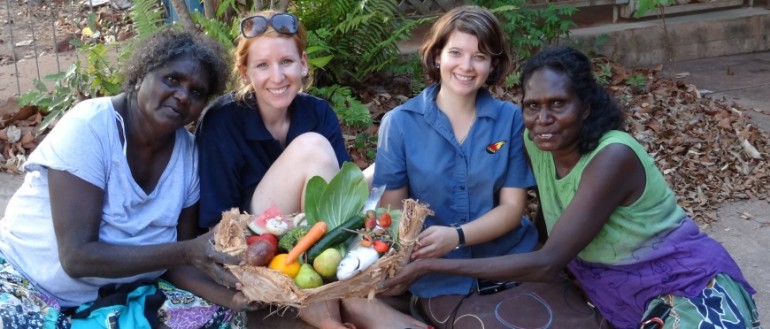The online ashtray
The story behind a creative campaign for slashing smoking among Indigenous youth.
In the article below, originally published on crikey.com.au, Lanie Harris from the Menzies School of Health Research, explains how the No Smokes project was developed, and how it is helping to spread an anti-smoking message.
When the No Smokes multimedia campaign launched in May, it was the result of two years development work informed by focus groups with young Indigenous Australians, teachers and health workers.
Dr Sheree Cairney, from the Menzies School of Health Research, had been encouraged to explore the potential of such a campaign by results from New Zealand, where quit rates of 60 per cent were achieved using multimedia strategies that targeted a youth audience including Maori populations.
On May 31 this year, World No Tobacco Day, Dr Cairney and her team launched nosmokes.com.au, a concept that empowers people with knowledge and capacity development using animations, games, video clips, music, downloadable educational tools and social media to explain addiction, talk about the effects of smoking and promote quitting strategies.
Importantly, Aboriginal faces and culturally relevant themes are used to deliver messages and complex concepts, and the target audience is involved in the development of material.
“Anti-smoking messages, even biomedical information, can be effectively conveyed if presented in an accessible style and format, and most importantly, in a way that incorporates cultural concepts of health,” said Dr Cairney.
No Smokes uses qualitative market research strategies through which the target group demonstrated an appetite for consuming health messages via the web, as long as the messages had the right pitch.
“We found that young people cared little about the long term dangers of chronic disease but reacted strongly to the idea that smoking changes the way the brain works and ‘tricks’ it into thinking it needs tobacco through addiction,” said Cairney.
The 2011 ABS Census showed that 62 per cent (131,345) of Aboriginal and Torres Strait Islander households have an internet connection, the vast majority of those connections being broadband.
Even in the difficult-to-reach remote communities, as far back as 2006, the ABS Community and Housing Infrastructure Needs (CHIN) survey showed 51 per cent of the remote Indigenous population had access to the internet.
Cairney’s focus groups in urban, rural and remote areas showed, unsurprisingly, that young Indigenous people are using the web for the same purposes as their non-Indigenous counterparts: to hunt information about sports, popular singers and celebrities.
The focus groups showed just how far web-based content has penetrated. Music and video sharing websites were found to have broad appeal, as did free games. Even the youngest and most remote participants were familiar with search engines such as Google.
Alongside the games and animations, No Smokes features over 70 personal video stories, many from well-known Indigenous identities such as comedian Sean Choolburra, singer Shellie Morris, dancer Rebecca Rarriwuy Hick, and musicians Warren H Williams.
“The videos were designed to inspire and support participants to change their behaviour through the use of positive role modeling,” explains Cairney.
Smoking in Indigenous communities has become normalised, she says. In 62 per cent of Aboriginal and Torres Strait Islander households, at least one person smokes; and in remote communities smoking whilst pregnant, while in cars or when children are around is commonplace.
“No Smokes provides a platform to challenge what they may be observing in daily life,” said Cairney. “We had to build a tool that reflected what young Indigenous people were telling us about how and why they were using the web.”
In focus groups young Indigenous people reported sharing images and footage of themselves dancing and singing, so delivering No Smokes as a multimedia tool allows it to grow organically as users shape and influence the content,” said Dr Cairney.
To spread uptake of NoSmokes.com,au, Cairney’s team has been using Facebook and Twitter to ‘unpack’ the resources through a daily drip-feed, meeting preferences for small, bite-sized information.
“It was interesting to note many urban Indigenous participants make a beeline for the Facebook button at the bottom of the No Smokes webpage,” says Cairney.
Naturally there are challenges for the site’s ongoing penetration. English literacy skills vary greatly, which is why much of the content is visual. Future phases of No Smokes will see content delivered in language. YouTube is blocked in many schools, so the video content is embedded from Vimeo.
To address these firewalls, an offline DVD with all multimedia content is also available for schools, and a series of Study Guides will be launched in October to help teachers create units of work related to issues that smoking raise.
Although still in its infancy, No Smokes been well-received, particularly by health workers and teachers, and has recently received funding from the Department of Health and Ageing for a further two years.
A formal evaluation process is underway to measure the level of engagement with the site and Dr Cairney hopes to see No Smokes become a standard resource in the toolboxes of Indigenous teachers and health workers Australia-wide as way to empower communities to make informed choices about tobacco use.

